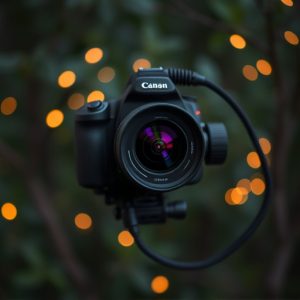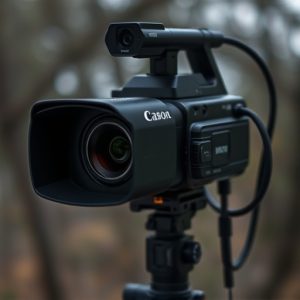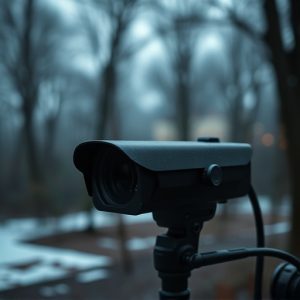Uncovering Hidden Cameras: Scanning Methods for Elderly Care Safety
Detecting hidden cameras in elderly care facilities demands advanced technology, including motion se…….
Detecting hidden cameras in elderly care facilities demands advanced technology, including motion sensors, night vision, and signal scanning. Professionals employ tools like thermal imaging, metal detectors, and RF scanners to ensure privacy and safety. The best hidden cameras for this setting balance visual confirmation with motion detection, fostering trust while providing top-quality care. Specialized knowledge and tools, such as signal scanners and thermal imaging, are crucial for regular comprehensive scans, deterring potential intruders and maintaining a secure environment. A methodical approach, including systematic identification, calibration, and logging, ensures accurate deployment of these devices, which should always adhere to legal and ethical guidelines, respecting residents' privacy and dignity.
Hidden recording devices in elderly care settings pose significant privacy concerns. Understanding these devices and their scanning techniques is crucial for maintaining safety and respect. This article explores advanced methods to uncover discreet surveillance equipment, emphasizing best practices for thorough signal scans. We delve into legal considerations and ethical implications surrounding hidden camera detection, particularly focusing on the importance of detecting such devices in elderly care environments. Learn about the most effective strategies to address this pressing issue, including the top-rated hidden cameras for elderly care settings.
- Understanding Hidden Recording Devices and Their Scanning Techniques
- The Importance of Detecting Hidden Cameras in Elderly Care Settings
- Popular Methods for Uncovering Discreet Surveillance Equipment
- Best Practices for Conducting Comprehensive Signal Scans
- Legal Considerations and Ethical Implications of Hidden Camera Detection
Understanding Hidden Recording Devices and Their Scanning Techniques
Hidden recording devices, also known as surveillance cameras, are increasingly sophisticated tools designed to capture footage discreetly. These devices range from tiny, almost invisible cameras to more advanced models that can record high-definition video and audio. Understanding how they work is crucial when it comes to detecting and preventing their unauthorized use, especially in sensitive areas like elderly care facilities.
Scanning for hidden recording devices involves a combination of technological tools and human expertise. The best hidden cameras for elderly care often include motion sensors, night vision capabilities, and advanced signal scanning methods. Professionals utilize specialized equipment such as thermal imaging cameras, metal detectors, and radio frequency (RF) scanners to detect the presence of these devices. By employing these techniques, caregivers and security personnel can ensure a safe and secure environment, maintaining privacy while providing the best possible care for their elderly charges.
The Importance of Detecting Hidden Cameras in Elderly Care Settings
Detecting hidden cameras in elderly care settings is paramount to ensuring privacy and safety for residents. With concerns rising about surveillance and potential abuse, implementing robust security measures is essential. The best hidden cameras for elderly care environments should offer advanced detection capabilities, combining visual confirmation with sensitive motion sensors to identify any unauthorized devices.
These surveillance systems play a crucial role in fostering trust and maintaining the dignity of the elderly. By utilizing cutting-edge technology, caregivers can navigate the challenges of monitoring without invading privacy, ensuring that residents feel secure while receiving the best possible care.
Popular Methods for Uncovering Discreet Surveillance Equipment
Uncovering hidden surveillance equipment, especially in sensitive areas like elderly care homes, requires specialized knowledge and tools. One popular method involves utilizing signal scanning devices that can detect wireless signals emitted by hidden cameras. These devices are particularly useful for identifying Best Hidden Cameras for Elderly Care, as they can pick up on unique radio frequencies often used by such devices. By analyzing these signals, security professionals can pinpoint the location of covert cameras, ensuring a comprehensive and discreet assessment.
Another effective approach is to employ thermal imaging technology. Unlike traditional visual inspections, thermal imaging cameras detect heat signatures, making it easier to identify devices that emit or absorb heat differently from their surroundings. This method is invaluable for uncovering hidden cameras disguised as everyday objects, helping to maintain the safety and privacy of elderly residents. Regular comprehensive scans using these advanced techniques can deter potential intruders and ensure a secure environment.
Best Practices for Conducting Comprehensive Signal Scans
When conducting comprehensive signal scans for best hidden cameras for elderly care, a systematic approach is key. Start by identifying all potential areas where hidden cameras could be installed, such as walls, ceilings, and furniture. Utilize specialized scanning tools that can detect wireless signals and electromagnetic emissions, ensuring you cover every nook and cranny.
Regularly update your scanning protocols to keep up with evolving technology used in hidden cameras. Calibrate and test your equipment thoroughly before each scan to ensure accuracy. Additionally, maintain a detailed log of all scans, including dates, locations, and any anomalies detected, for easy reference and future comparison.
Legal Considerations and Ethical Implications of Hidden Camera Detection
The use of hidden recording devices, especially in sensitive areas like elderly care facilities, raises significant legal and ethical concerns. In many jurisdictions, the right to privacy is a fundamental human right, and surreptitious surveillance can be considered a severe breach. The placement of hidden cameras without explicit consent from residents or their guardians is generally illegal and unethical, as it infringes upon personal freedom and trust.
When discussing the best hidden cameras for elderly care, it’s crucial to emphasize responsible use. This includes obtaining proper authorization, ensuring transparency in surveillance practices, and adhering to data protection regulations. Ethical considerations also dictate that any recorded footage should be secured and accessed only by authorized personnel to safeguard privacy and maintain the dignity of the individuals being cared for.
Hidden recording devices pose a significant threat to privacy, particularly in sensitive environments like elderly care settings. Understanding the various scanning methods and best practices is crucial for maintaining a safe and ethical space. By employing advanced technologies and adhering to legal guidelines, it’s possible to detect even the most discreet surveillance equipment. When it comes to best hidden cameras for elderly care, comprehensive signal scans are key to identifying and mitigating potential risks, ensuring peace of mind for residents, families, and caregivers alike.


